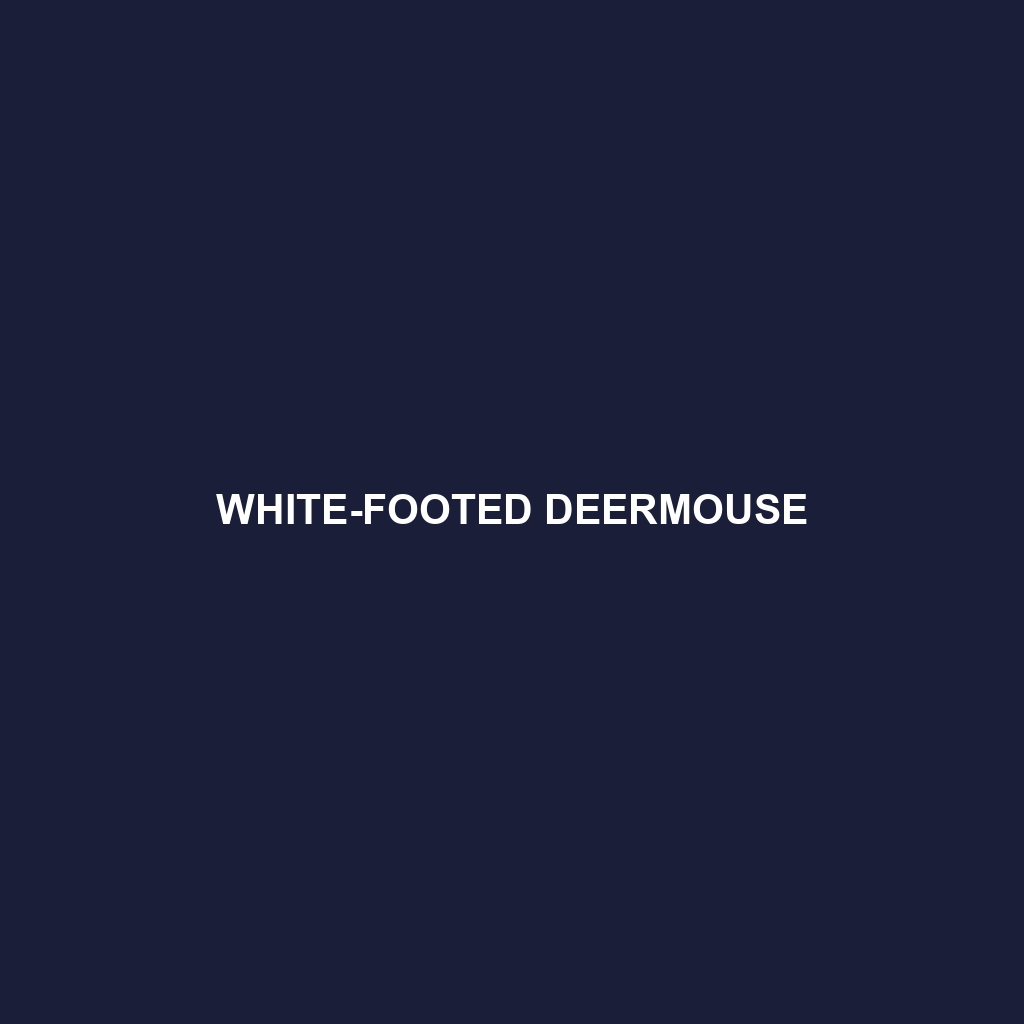Tehuantepec Deermouse
Common Name: Tehuantepec Deermouse
Scientific Name: Peromyscus zaurcus
Habitat
The Tehuantepec Deermouse is primarily found in the tropical and subtropical forests of the Isthmus of Tehuantepec in southern Mexico. This species thrives in areas characterized by a mix of deciduous and evergreen forest, favoring regions with dense underbrush and nearby water sources. The humid environment of this locale creates an ideal habitat for the Tehuantepec Deermouse, providing plenty of cover and foraging opportunities.
Physical Characteristics
This nocturnal rodent typically measures between 15 to 20 cm in length, with a tail that can be as long as the body. The Tehuantepec Deermouse has a distinctive appearance, featuring a soft, dense coat that ranges from light gray to reddish-brown on the back and white on the underside. Its ears are relatively large, aiding in its keen sense of hearing, and its eyes are dark and expressive, adapted for its nighttime lifestyle.
Behavior
Tehuantepec Deermice are generally solitary creatures, known for their active behavior during the night. They exhibit a range of vocalizations and communicate through scent markings. These rodents are agile climbers and often build nests in trees or dense foliage for safety against predators. Their keen sense of smell and hearing helps them navigate through their forest habitat effectively.
Diet
The diet of the Tehuantepec Deermouse consists mainly of seeds, fruits, and insects. They are primarily granivorous, foraging for various seeds and nuts during the night. Their feeding habits are crucial for the dissemination of seeds within their habitat, contributing to the overall health of their forest ecosystem.
Reproduction
Tehuantepec Deermice typically breed throughout the year, with peak breeding seasons occurring during the warmer months. After a gestation period of about 28 days, females usually give birth to litters of 2 to 5 offspring. The young are born altricial, developing rapidly, and begin to emerge from the nest after about two weeks.
Conservation Status
Currently, the Tehuantepec Deermouse is classified as a species of **vulnerable** conservation status due to habitat loss from deforestation and agricultural expansion. Preservation of their natural habitat is critically important for their continued survival.
Interesting Facts
One fascinating aspect of the Tehuantepec Deermouse is its ability to adapt to varying forest habitats, displaying different coat colors and sizes based on their specific environments. Additionally, they play a significant role in their ecosystem by aiding in seed dispersal.
Role in Ecosystem
The Tehuantepec Deermouse serves an essential role in maintaining the balance of its ecosystem. By feeding on seeds and fruits, they help facilitate plant growth and forest regeneration. Their presence also contributes to the food web, serving as prey for various predators, including birds of prey and snakes, thus supporting the biodiversity of their habitat.
